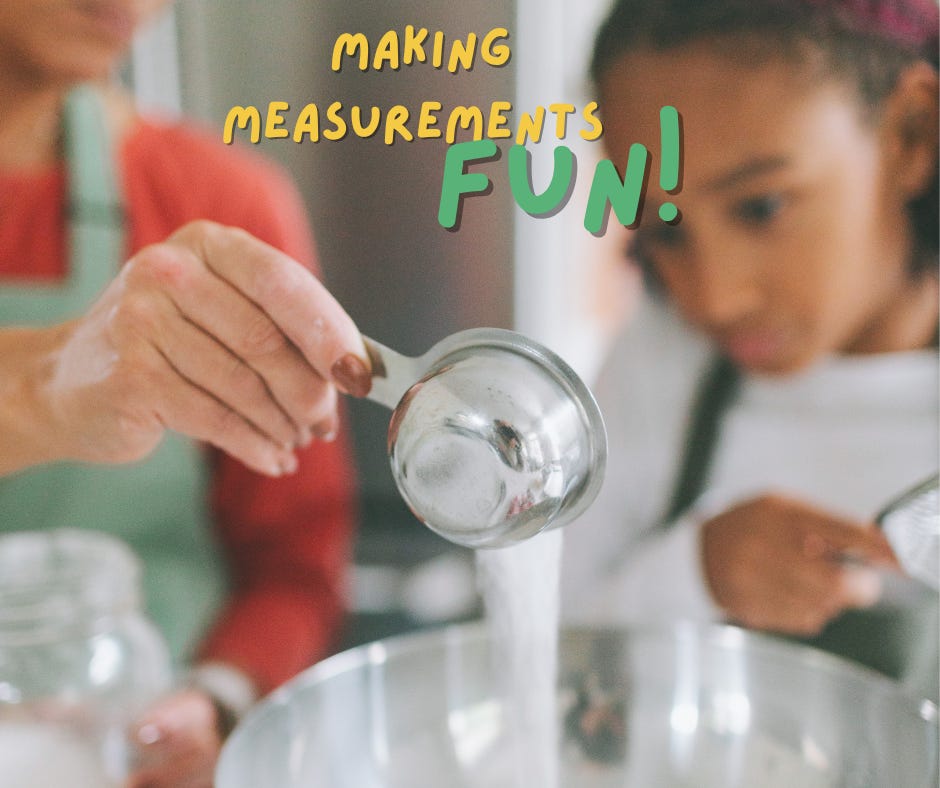Last week, one of my subscribers, Sue, sent me a request:
"Can you create some digital products on kitchen measurement ideas?"
I thought it was a great suggestion because let’s be honest—kitchen measurement is one of the most common pain points for students.
Some students mix up teaspoons and tablespoons. Others aren’t sure when to use a liquid measuring cup versus a dry one. Some get stuck on ounces versus grams. And when it’s time to double or cut a recipe in half, that’s when the confusion really sets in. By the time they’re ready to cook, they’re often overwhelmed before they even begin.
But kitchen measurement isn’t just about math—it’s about building confidence in the kitchen. When students understand how to measure correctly, cooking stops being stressful and starts becoming creative and fun.
That’s why I put together a collection of classroom-ready activities and printables designed to make your job easier while helping your students succeed.
Start with the Free Lab: Guess the Weight Activity
To help you get started, I’m giving you free access to the Guess the Weight Lab Activity.
In this hands-on exercise, students will pick out different food items, guess their weight, and then use a kitchen scale to check their answers. This helps them build kitchen instincts, not just rely on measuring tools. It also teaches them when accuracy is critical—like in baking—and when estimation is perfectly fine.
You can grab the Guess the Weight Lab Activity here.
Want More? Get the Full Kitchen Measurement Kit
For teachers who want everything ready to go, I’ve created a complete Kitchen Measurement Mastery Kit available to paid subscribers. This bundle includes the Guess the Weight lab activity plus:
Kitchen Measurement Conversion Practice Worksheet
Teaches students how to convert between teaspoons, tablespoons, cups, fluid ounces, and grams using the universal conversion method. Includes examples, practice problems, and a teacher answer key.Recipe Scaling Worksheet
How do you double a recipe? Cut it in half? Scale it for a larger group? This worksheet gives students real-world practice with multiplying and dividing ingredient amounts—skills they’ll use at home and in food service careers.Kitchen Measurement Conversion Chart
A printable reference guide to hang in your classroom or hand out to students. It’s a simple way to reinforce conversions and reduce classroom stress.Kitchen Measurement Do’s and Don’ts Infographic
Visual reminders of best practices, like using dry cups for solids, liquid cups for liquids, leveling off dry ingredients, and avoiding common mistakes like scooping flour directly from the bag.
A big thank you to Sue for sparking this project! If you have ideas for future resources, feel free to leave a comment below. I’m always listening.




